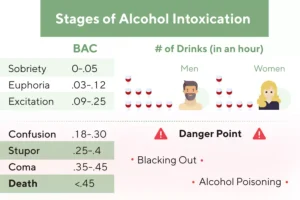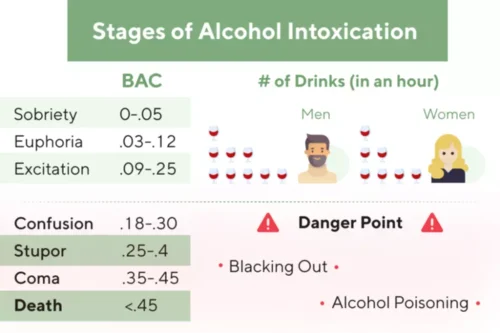Are Toads Poisonous to Dogs? Toads to Watch Out For
As a pet owner and animal lover, I couldn’t help but wonder, “How do I know if this toad is poisonous? ” This question sparked my curiosity, leading me to delve into the world of toads and their toxicity levels. Dogs with these signs should receive emergency mouth flushing at home and call the veterinarian or poison hotline for advice. Inducing vomiting is a riskier option since there is the risk of aspiration pneumonia and exposure of the esophagus and mouth to more toxin.
Are All Toads Poisonous? The Truth About Their Toxicity
- These sounds are typically used by males to attract mates and assert their territory, creating a variety of unique calls across species.
- If your pet comes into contact with a poisonous toad, it is important to seek veterinary assistance immediately, as ingesting toxic substances can be life-threatening.
- No matter what kind of toad, don’t be afraid to grab it and take it away from the dog.
- Let’s have a closer look at the risks of consuming toads before diving into how to safely consume them if you really have no other options.
- While not all toads are toxic, some species possess glands that secrete poisonous substances as a defense mechanism against predators.
The toxicity of Bufotoxin can cause a range of physiological effects in animals that come into contact with it. These effects can are toads poisonous to humans vet-approved safety facts and faq vary from mild irritation to more severe symptoms like cardiovascular collapse or even death. The toxic effects are primarily caused by the presence of several chemicals present in Bufotoxin, such as bufotenin and bufagin. The toxicity of true toads, compared to other amphibians, can vary depending on the species. Some species, like the cane toad, are known to have particularly high levels of toxicity.
Because they are drawn to strong scents and sudden movements, toads — with their unpredictable hops, distinct smells, and occasional croaks — can be an irresistible attraction. However, what starts as innocent curiosity can take a dangerous turn if the toad happens to be toxic. The risk of absorbing the toxin from an American toad can be significantly reduced by simply wearing gloves and observing sufficient hygiene.
Next to the cane toad, it’s the largest toad in the United States, growing to 7.5 inches. In color, it’s olive green or mottled brown, and its skin is smooth and leathery. There is also a white wart by the corner of the mouth and white glands on the legs.
Alternatively, you could flush the mouth of your pet with large amounts of running water. Try to point the dog’s head downward to decrease the chances of water being swallowed or inhaled. You can be exposed through either direct or indirect contact with the toad its droppings, or anything the toad came in contact with. (For example, if you touch an American toad, it is droppings or water where the toad has been, then touch stick your fingers into your mouth without first washing your hands). To prevent encounters, avoid leaving food outside, supervise your pets during peak toad activity times, and educate your family about the dangers of toads.
Where Do People Eat Toads?
Other toads are far less of a problem unless the dog is small or has actually eaten the toad. The cane toad (bufo, marine, or giant toad) is found in southern to central Florida, the southern tip of Texas, and Hawaii. This is a large toad, usually 4 to 6 inches long, growing up to 9 inches. It has triangular parotoid (also called parotid) glands on its shoulders (native toads have oval glands). There are several websites and videos that can help you identify how a cane toad looks and sounds.
What is the mechanism by which true toads produce toxins?
They’re found on nearly every continent, you hear them calling at night, and you might even see one hanging around in your yard…what are they? An incredibly common amphibian, toads are spotted everywhere in the world, except for Antarctica. Symptoms can appear within seconds or minutes of exposure, with severity depending on the species, the region where it was encountered, and the amount of venom absorbed. The most commonly reported signs are excessive drooling (hypersalivation) and bright-red discoloration of the gums.
Toxicity in Different Species of Toads
While the American toad produces bufotoxins, these toxins are far less potent compared to those found in other species, such as the Colorado River toad or the cane toad. The toxins of these species can be much more dangerous to both humans and animals. While none of these pose the threat that the cane or Colorado River toads pose, all toads possess parotoid glands that secret a poisonous, milky substance to deter their predators. This same substance, called bufotoxin, is found in many amphibians and even in poisonous mushrooms. So, it’s good to be aware of what toxic toads are in your area or where you travel and what to do if you suspect your pet has had a run-in with one. In most areas of the country, toads cause only drooling and mild vomiting that do not require veterinary attention.
Even if you find one of the harmless toads listed here, it can be an indication that there is moisture nearby that can also bring in the big, poisonous toads. Removing unintentional water features like drips from a leaky hose or AC compressor can make a big difference. Of the 5 species of toads most common to the Phoenix and Tucson metro areas, only one can be considered dangerous. That is the Sonoran Desert Toad, or Colorado River Toad as they are also called. They are large, olive green toads with elongated poison glands behind the eye.
If your pet has picked up a toad and is drooling, try to rinse out her mouth with water. If your pet is vomiting repeatedly or has swelling of the face or eyes, a trip to the vet is in order. Symptomatic care may be in order such as anti-nausea drugs, drugs that coat the gastrointestinal tract or eye medications if the substance has caused conjunctivitis. The patient’s mouth should be immediately and thoroughly lavaged with copious amounts of water.
- In conclusion, being able to tell if a toad is poisonous is a valuable skill that can help you appreciate these fascinating creatures while staying safe in their presence.
- Toad secretions contain chemicals that affect the heart in a manner similar to digoxin.
- Please do not ask emergency or other specific medical questions about your pets in the blog comments.
- To prevent exposure, supervise pets outdoors, especially during warm, wet periods and at night when toads are most active.
People in certain parts of the world—China and Southeast Asia in particular—where toad secretions have been used as folk medicine and as an aphrodisiac are also at high risk. Severe poisoning has also occurred in rural populations where toads and toad eggs were eaten due to food scarcity. The most important poison in newts and salamanders is tetrodotoxin (TTX), one of the most dangerous toxins known to man. TTX-containing newts are found in Oregon, California, and southern Alaska.
Contact with the eyes can result in intense pain, swelling of the eyelids, short-term visual changes, and infection. The Cane Toad (Rhinella marina) is an exception with much more potent toxins, posing a serious risk to animals and pets. While bufotoxins in American Toads serve as a deterrent, many animals have adapted ways to consume these toads safely. These strategies enable certain animals to prey on toads despite their toxic defenses.
















